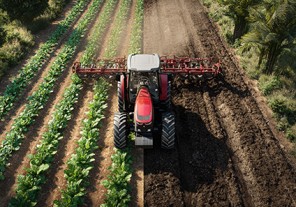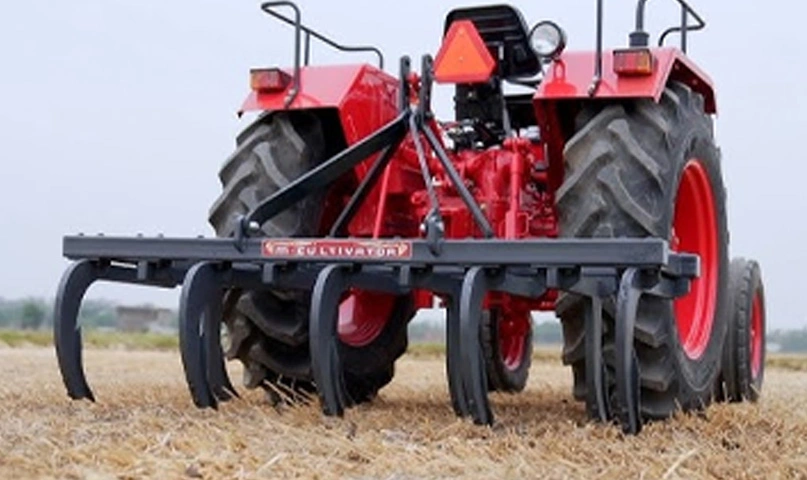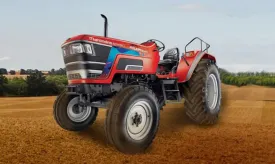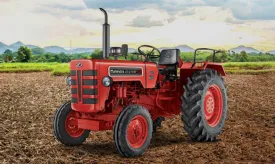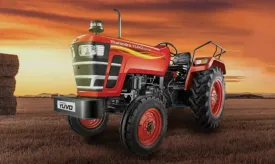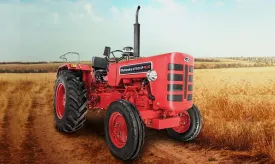How to Attach Farm Implements to Your Tractor: Step-by-Step Guide

Attaching farm implements to a tractor requires a systematic approach to ensure that the implement is securely connected and safe to use. Here's a step-by-step guide to attaching various types of farms implements to your tractor:
1. Prepare the tractor and implement
- Turn off the tractor's engine and engage the parking brake.
- Ensure the implement is on level ground and positioned close to the tractor's rear hitch (or front, depending on the implement type).
- Check the implement for any damage or maintenance needs before attaching it.
2. Align the tractor and implement
- Position the tractor close enough to the implement so that the hitch points on both are aligned.
- If the implement is not in the correct position, you may need to adjust it slightly using the tractor's rear lift arms or a manual hand winch, depending on the implement.
3. Lower the tractor's three-point hitch
- For most implements, use the tractor's three-point hitch to lower the implement's arms to a height that allows for easy attachment. Ensure the lift arms are lowered to their lowest setting before connecting.
- Position the implement on level ground and align the hitch points with the tractor's lift arms.
4. Attach the lower hitch arms
- Lift the lower hitch arms of the tractor using the hydraulic system or manually if required.
- Align the pins of the tractor's lower hitch arms with the holes on the implement's attachment points (these are usually located on both sides of the implement).
- Insert the pins and secure them with clips or fasteners to prevent them from coming loose.
5. Attach the top link
- Locate the top link on the tractor. This is typically a shorter arm that connects the top of the implement to the tractor's upper hitch point.
- Attach the top link to the implement's upper attachment point and the tractor's upper hitch point.
- Adjust the top link length to ensure the implement is at the correct angle when lifted. This adjustment helps ensure the implement operates effectively during use.
- Tighten the top link securely after adjusting the length.
6. Secure Any additional connections
- Some tractor implements may have hydraulic or PTO connections (for power-driven implements) or electrical connections (for implements with lights or automated systems).
- Connect the PTO shaft by aligning the tractor's PTO output with the implement's input shaft. Lock it in place and make sure the safety cover is properly fitted.
- Attach hydraulic hoses (if applicable) by matching the correct color-coded fittings and ensuring they are securely connected.
7. Check for stability and alignment
- Raise the implement using the tractor's hydraulic system to ensure it is securely attached.
- Check the alignment to ensure the implement is level. Adjust the top link if necessary to ensure proper functioning.
- Ensure that there is no wobbling or shifting of the implement when it is lifted or moved.
8. Perform a test run
- Start the tractor and slowly move forward with the implement in place to test its functionality.
- Check the operation of the implement, ensuring it is working properly and securely attached.
- If there are any issues, stop immediately, turn off the tractor, and recheck the connections.
9. Ensure safety
- Double-check all pins, bolts, and safety clips to ensure they are securely fastened.
- If your implement has transport wheels, lower them before moving the tractor.
- Always follow the manufacturer's instructions and safety guidelines to prevent accidents during operation.
10. Use the implement
- Once the implement is properly attached, you can begin using it for its intended purpose, whether it's plowing, cultivating, or mowing.
- Regularly check connections during use to ensure everything remains secure.
Summary:
Attaching a farm implement to a tractor involves proper alignment, securing the hitch points, adjusting the top link for the correct angle, and connecting any hydraulic or PTO shafts. After ensuring all connections are tight and secure, perform a test run before using the implement. Always prioritize safety by following the manufacturer's instructions and using the correct tools for attachment.









